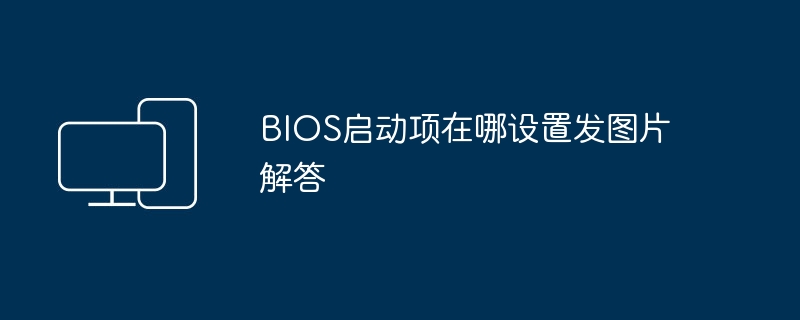

Press the power-on button to enter the BIOS setup interface. The shortcut key F12 to enter the BIOS will usually be displayed on the screen.
You can also press the F1 key when turning on the computer to enter the BIOS setup interface.
In early computers, you usually use the left and right keys to navigate to the boot page to set startup items, and use the up and down keys to select startup items (such as optical drives, U disks, and hard disk boot).
In addition to setting the boot menu in the BIOS, you can also directly enter the setting interface through the shortcut menu. For example, when installing the system, you can choose to boot from the CD. After selecting the CDROM option and pressing Enter to confirm, you need to press any key to confirm when restarting the computer. If you choose to install the operating system through USB boot, you need to insert the prepared USB PE system into the USB port in advance, otherwise the BIOS boot menu will not display the USB item.
The BIOS setting startup item of newer computers is (use the left and right keys to locate): StartUp.
StartUp →Boot.
Set the startup sequence as follows: CD format U disk startup, UEFI startup, floppy disk format U disk startup, optical drive startup, hard disk startup, hard disk format U disk startup, network boot startup.
UEFI/Legacy Boot Priority (UEFI First/Legacy First) only appears when the previous item is selected. Network startup (select the startup item when waking up from the network) has the word LAN.
Please note: After installing the system using a U disk or CD to boot, you need to set the boot to the hard disk (displayed with the word HDD) when restarting the computer, otherwise it will enter the U disk or CD boot again.
1. Msconfig method
The traditional Msconfig is the most convenient way for us to find out the hidden startup risks. In Windows98/XP/2003, we can open it directly. The method is to open the "Run" window, enter "msconfig" and press Enter to open the configuration tool.
Depending on the operating system version, the window that opens will be different. However, the most important one is the "Startup" tab. We only need to switch to this tab and then cancel the startup items of unknown origin, so as to prevent them from running.
If it is a Windows 2000 system, although msconfig is not provided by default, it does not matter. We only need to copy msconfig.exe to other systems and then save it to the Windows 2000 system. Double-click the copied file, and you will be prompted that some system files cannot be found. You can skip this until you enter the configuration window.
2. Registry method
The registry is also a good place for us to find out potential startup risks. Open the "Run" window, enter "regedit" and press Enter to open the registry. We only need to open HKEY_CURRENT_USERSoftwareMicrosoftWindowsCurrentVersionRun and HKEY_LOCAL_MACHINESOFTWAREMicrosoftWindowsCurrentVersionRun in sequence. The key value on the right is the program that runs when the system starts. For programs that do not need to be started with the system or forcibly added, you can directly press the "DEL" key to delete them.
Tips: System startup is a project that runs automatically, and the quick startup on the taskbar can help users quickly open the corresponding program.
3. Service viewing method
Since all system services are enabled at startup. Therefore, some viruses and Trojans will register themselves as services to achieve the purpose of starting with the system.
We can also view this in the registry. Open the registry and find HKEY_LOCAL_MACHINESYSTEMCurrentControlSetServices. Each item below represents a service that runs automatically at startup. The start under each item indicates the startup type. If the value is 2, it means automatic startup with the system, 3 means manual startup, and 4 means disabled. Decide whether these services will continue to be executed at startup according to your actual needs.
Another easier way to view services is to open the service manager directly in the system. Enter the "Control Panel" and double-click "Services" in "Administrative Tools" so that we can clearly view the status and startup method of each service. At the same time, we can also judge whether the service is a system service or a regular service according to the service description. Serve. If it is an illegal service, it will be disabled and its "Startup Type" will be set to "Disabled". Source: Examination Big
Of course, there are many ways to find out the hidden dangers of system startup, such as using anti-virus software to check during startup. As long as we notice abnormalities in the system and check the running processes in task management in a timely manner, we will be able to uncover all these hidden dangers.
The above is the detailed content of How to set BIOS startup items: Detailed graphic tutorial. For more information, please follow other related articles on the PHP Chinese website!




